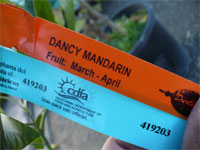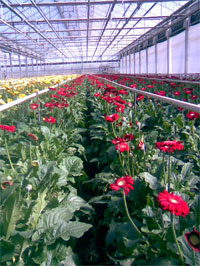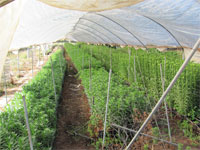- Agricultural Commissioner
- About Us
- FAQs
- Funding
- How We Are Funded
- County General Fund
- Pesticide Use Reporting
- Oak Death Inspection
- Pierce’s Disease Control
- Pierce’s Disease Nursery Treatments
- Organic Crops Program
- Seed Inspection
- Nursery Inspection
- Farmers Market Inspection
- Land Use Planning
- Pest Control Business Registrations
- Citrus Maturity Inspection
- Programs
- How We Spend Our Time
- Pest Detection and Eradication
- Citrus Inspection and Commodity Regulation
- Pierce’s Disease Control
- Pest Exclusion and Plant Quarantine
- Seed Inspection
- Nursery Inspection
- Farmers Market Inspection
- Egg Quality Control
- Apiary Inspection
- Crop Statistics
- Pesticide Use Enforcement
- NPDES MS4 Permit Compliance Inspections
- Land Use Planning
- Toland Landfill Project
- Weights & Measures
- FORMS/DATA
- Notices
- APAC
- SALC GRANT
- Crop Reports
- Contact Us
- Agricultural Commissioner
- About Us
- FAQs
- Funding
- How We Are Funded
- County General Fund
- Pesticide Use Reporting
- Oak Death Inspection
- Pierce’s Disease Control
- Pierce’s Disease Nursery Treatments
- Organic Crops Program
- Seed Inspection
- Nursery Inspection
- Farmers Market Inspection
- Land Use Planning
- Pest Control Business Registrations
- Citrus Maturity Inspection
- Programs
- How We Spend Our Time
- Pest Detection and Eradication
- Citrus Inspection and Commodity Regulation
- Pierce’s Disease Control
- Pest Exclusion and Plant Quarantine
- Seed Inspection
- Nursery Inspection
- Farmers Market Inspection
- Egg Quality Control
- Apiary Inspection
- Crop Statistics
- Pesticide Use Enforcement
- NPDES MS4 Permit Compliance Inspections
- Land Use Planning
- Toland Landfill Project
- Weights & Measures
- FORMS/DATA
- Notices
- APAC
- SALC GRANT
- Crop Reports
- Contact Us
Nursery Inspection



The California Department of Food and Agriculture (CDFA) provides funding to inspect wholesale production nurseries in the county once a year. Part of the funding comes from fees paid by companies for their state nursery licenses and certificates. Inspections are important because the movement of nursery stock is one pathway that common and exotic pests move into new areas. Agricultural inspectors may determine during an inspection that nursery stock does not meet the standards of cleanliness for common pests and will require a nursery to treat. It is not uncommon for agricultural inspectors to discover pests on nursery stock that are not known to occur in Ventura County or even in the state. When an unknown insect or disease is detected, a specimen sample is sent to the CDFA Laboratory in Sacramento for positive identification. The pest is then rated A, Q, B, C or D according to the risk that it will cause damage to crops or the environment. Once the pest is rated by the state, the Agricultural Commissioner in partnership with the state must decide on a plan of action. A quarantine may be established and an eradication program undertaken in the most extreme cases.
The movement of common nursery stock may be affected by quarantines established in portions of the state or individual counties. Funding for eradication programs is very difficult to come by given the current situation with the state and federal budgets and no money is available for all but the most damaging pests. There may be no eradication action possible due to a lack of resources. Pests that might have triggered an action plan in the past now may become a problem that the industry and public must learn to live with.



